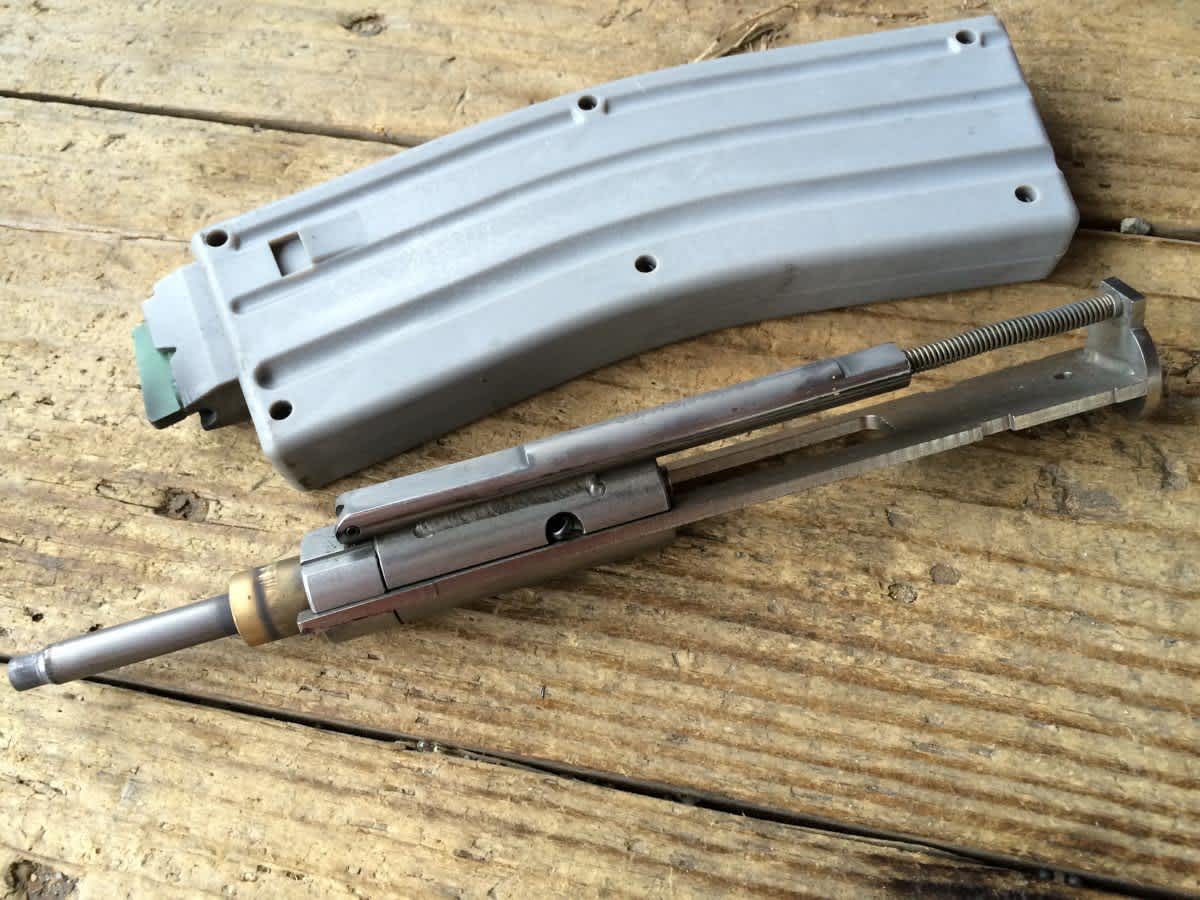.22 LR AR Conversion Kits: Are They Worth It?
Tom McHale 01.14.15

One of my New Year’s resolutions is to reject, at least temporarily, internet hearsay. You know what Abraham Lincoln said about the internet, right? “Four score of lies, myths, exaggerations, and urban legends.” That’s a long way of saying lots of folks read something and then pass it on as the gospel truth.
Knowing that I can be a victim of internet “rumorroids,” I’ve decided to do something about it. When I hear something that sounds like an established claim, but with nothing to back it up, I just might test its validity myself.
One claim that’s been passed around for years is that .22 LR conversions for AR rifles aren’t worth the trouble because they aren’t accurate, rarely function, and have been known to cause massive outbreaks of shingles. So to start my 2015 resolutions, I decided to test one of those kits for myself, just to see.
I ordered a 22AR Conversion Bravo kit from CMMG, which is $230. The Bravo kit is as basic as it gets. It consists of a stainless steel bolt replacement and a single 25-round magazine. If you live in a rights-challenged state, you can get a Bravo kit with a 10-round magazine.
The basic idea of this conversion kit is simple: you only replace the bolt and magazine. The front of the conversion bolt features a “chamber” that’s a replica of a .223/5.56x45mm cartridge, so that fits in your existing chamber and barrel. The .22 LR cartridge feeds into the pseudo-chamber on the bolt replacement kit and fires the .22 LR projectile out of the conversion kit chamber and into your normal barrel. The theory is that a standard .223 barrel is close enough in diameter for things to work out. Make sense?
To find out how this worked, I brought it to the range along with two AR-type rifles: a Smith & Wesson M&P15 VTAC and a Smith & Wesson M&P Optics Ready (OR) model. The VTAC has a 1:7 twist barrel and the OR has a 1:8. We’ll talk more about that later.

Since I was in myth-testing mode, I played dumb, which wasn’t all that hard, and tore open the packaging at my shooting bench. I figured instructions were optional since there were only two parts, so I opened up my upper receiver, removed the bolt, and dropped the conversion bolt into place. After switching to the CMMG .22 LR magazine, I was ready to go. The whole operation, including not reading any instructions, took me about a minute. Most of that time involved tearing open the packaging.
Did it function reliably?
Right off the bat, I experienced quite a few jams and malfunctions. Then it occurred to me that I hadn’t provided any lubrication to the new bolt. That’s what you get for diving right in without stopping to think. As a result of all this reflection, I remembered that the new bolt felt completely dry when I removed it. I remedied the situation by squirting a few gobs of OTIS Technology CLP into the ejection port. Following proper lubrication instructions is for sissies.

Voila! Once I actually added some oil, things worked like a champ. I shot about a dozen different types of .22 LR from both rifles with the conversion installed and experienced zero malfunctions. One thing that surprised me was that standard-velocity ammo worked as well as high-velocity rounds. I wasn’t sure if the standard loads would generate enough pressure to make things work, but they did.
What about accuracy?
Before I did accuracy testing, I pondered some geometry stuff.
.22 LR cartridges actually have different bullet diameters depending on the load. Many of the target and general purpose 40-grain lead bullets are closer to .224 inches in diameter than .223, which is “normal” for .22s. This led me to believe that I might be able to get some decent accuracy out of the conversion kit, since the bullet diameter could be the same or very close to that of a standard .223 Remington projectile, which also (usually) measures .224 inches diameter.

In addition to the diameter variance of different .22 LR cartridges, I also assumed that the Smith & Wesson M&P15 OR would be more accurate due to its lower twist rate. A “normal” .22 LR rifle like a Ruger 10/22 has a twist rate of 1:16, which is quite a difference from the 1:7 and 1:8 or the two test rifles. I figured the twist rate issue would be the cause of any serious accuracy problems.
Here’s what I found.

As you can see, my theory was correct—the 1:8 twist rate AR shot appreciably better than the 1:7 version. I also checked for point of impact variance. Yes, it was a little off from that of .223 rounds at a 50-yard range, but only by about an inch. For inexpensive practice with your “real” rifle, that’s a pretty good tradeoff.
I have to say I was pleasantly surprised by these results. Yes, you can buy a dedicated .22 LR rifle that will shoot tighter groups, but remember, we’re talking about a bolt conversion kit here. The chamber and barrel are in separate pieces! Considering that I can drop this in, and shoot .22 LR ammo, I think it’s a heck of a deal. .22 LR is more expensive than it used to be, but it’s still $0.08 per round give or take. That’s a lot less than the $0.25 per round for .223/5.56mm ammo. Plink away!
Tom McHale is the author of the Insanely Practical Guides book series that guides new and experienced shooters alike in a fun, approachable, and practical way. His books are available in print and eBook format on Amazon.

